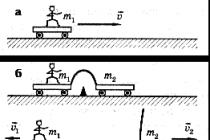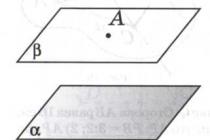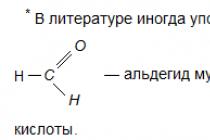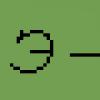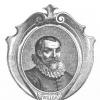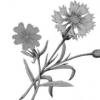Dangerous Sky of Afghanistan [Experience of combat use of Soviet aviation in Local War, 1979-1989] Zhirohov Mikhail Alexandrovich
Large-caliber machine guns and other small arms
Despite the sufficient saturation of the Mujahidees of the opposition by various samples of CRKK and MZ, the basis of their air defense was large-caliber machine guns. First of all, we are talking about the famous 12.7-mm DSHK, more precisely, about its upgraded version of DSHKM. The enemy had a certain number of trophy trophies, but the main mass, about 80%, was the licensed machine guns of Chinese production, the so-called type 54. Often in the Trophops of Special Forces there were also Pakistani samples issued by the Chinese license. According to Western journalists who visited the detachments of Afghan opposition, such machine guns were among the favorite types of weapons of the Mujahedov, who, as one of the leading Western specialists of Olivier Roy, "became real asams in handling DShK." The amount of these machine guns grew from year to year. So, in early 1987, the Soviet experts were in the detachments of the opposition of 2700 units in the detachments of 2700 units, then in the year already 3410, and by the end of 1988 - 4050. The characteristic outbreaks of shots on the muzzle cut Soviet pilots were called "welding" and treated these machine guns respectfully.
In large quantities, these machine guns captured with rebels. Thus, in the report of the head of the Gubbon of the Ground Forces of September 22, 1984, among the weapons captured at the rebels, it was indicated: DSHK for May - September 1983 - 98, for May - September 1984 - 146. Afghan government troops from January 1 to 15 June 1987, for example, destroyed 4 ZSSU, 56 DShK of rebels, captured 10 ZSSU, 39 DSHK, 33 other machine guns. Soviet troops for the same period destroyed 438 DSHK and ZSU, captured 142 DSHK and ZSU, 3 million 800 thousand units of ammunition to them; The special forces divisions destroyed 23 DShK and 74,300 units of ammunition to them, captured - respectively 28 and 295,807 units.
Another popular with the rebel system was again the Soviet 14.5-mm large-caliber machine gun of the CPV. Sources of deliveries are the same as his "older brother". In Afghanistan, machine guns were used on various flaps. The most common was the single-barreled anti-aircraft Mountains SSU-1, which most often appear in the Soviet documents.
In comparison with the DShK, 14.5-mm machine guns from the enemy was much less: according to the assessment of Soviet intelligence, in 1985 - 180, in early 1987 - 360, in early 1988 - 591, at the end - 770.
In small quantities in Afghanistan, also found the application of the American 12.7-mm machine gun "Browning" M2, adopted for years in 1933
A few words about the use of small arms with a caliber of 5.54-7.7 mm against Soviet aircraft and helicopters. The Mujahideen was fired at the turntables from everything that was at hand, including rifles, automata, hand and machine guns. Among the Afghans were a lot of excellent shooters, because Pashtunov, and the Tajiks, the war and the robbery were considered an occupation worthy of a real man, and the ability to shoot a lot of advantages.
This text is a familiarization fragment. From the book Technique and Armament 1998 02 Author From the book Technique and Armament 1998 03 Author Magazine "Technique and Armament" From the book Technique and Armament 2002 11 Author Magazine "Technique and Armament"Modern uniform and large-caliber machine guns This issue is a continuation of the conversation * about modern machine-gun arms and is dedicated to a single and large-caliber machine guns. * See "Tiv"
From the book Technique and Armament 2003 02 Author Magazine "Technique and Armament"Germany machine guns MG.01 machine gun without an inflated on a folded salad machine
From the book Technique and Armament 2004 06 Author Magazine "Technique and Armament" From the book Technique and Armament 2005 01 Author Magazine "Technique and Armament"Machine guns Placing hopes for manual machine guns with the possibility of shooting from the machine and the machine guns of infantry tanks, the British brought the Vickers machine guns (see "Tiv" No. 2/2003, p. 14-15) from battalions, reducing their role and in Attack, and in defense. But the war demanded
From the Book of Myths of the Great Patriotic War - 1-2 [Military Historical Collection] Author Isaev Alexey ValerevichLarge-caliber machine guns German land forces did not have a regular large-caliber machine gun for the fight against armored vehicles and low-fat enemy aircraft. 20-mm automatic guns (for example, anti-aircraft Flak 38 on a low wheel fautte) were too bulky
From the book Martial Commercials of the World 2014 № 08 fighter tanks B1 "Centaur" authorWith a checker at the machine guns, the famous attack of light cavalry under Balaklava. The time of the Crimean War The Russian Army under the command of Prince Menshikov tried to distract the English-franco-Turkish allies from the deposited Sevastopol, causing a blow in the Balaklava area. At 6 am 13
From the book Modern Africa War and Weapons 2nd Edition Author Konovalov Ivan PavlovichTank machine guns During World War II, the tanks were additionally equipped with machine guns that were used to shoot terrestrial or air targets. Some machine guns were installed in the frontal part of the armored housing and were intended for
From the book Sniper Survival Textbook ["Shoot rarely, but aptive!"] Author Fedoseev Semen LeonidovichLarge-caliber sniper rifles Note a large-caliber tenachable sniper rifle M82 (Barett M82) (Barett M82) American production (cartridge 12.7x99 mm). The Russian large-caliber rifles will note the five-traquer KSWC (12.7x99 mm cartridge) and ASV-96 (B-94) (cartridge
From the book Weapon Victory Author Military business collective authors -Machine gunners First place among the machine guns for distribution on the Black Continent occupy RPK (cartridge 7.62x39 mm), RPD (cartridge 7.62x39 mm) and PC (PKM) (9.62x54 mm chuck) production of the USSR / Russia and Belgian FN Magician (FN MAG) (cartridge 7.62x51 mm) (and their samples produced under license in many
From the book Training actions in offensive battle Author Gavrikov Fedor Kuzmich8. Large-caliber sniper rifles are large-caliber individual weapons, significantly superior to the power and target range of linear armament of shooters, is not news. Enough to remember heavy fortress guns on special installations
From the book Russia in the First World War Author Golovin Nikolai NikolaevichSmall weapons can hardly be installed now, who happened to make the first retaliatory shot of the Great Patriotic War. But there is no doubt: before everyone, one of the samples of the domestic small arms joined the battle, be it a TT gun, Mosinskaya three-year or
From the book Encyclopedia Special Forces of the countries of the world Author Naumov Yuriy YuryevichRiflement in the attack Organization and training Claim the tactical workshop for learning the rifle branch of the actions in the attack is carried out as part of the platoon by each commander of the department with its branch. The occupation is carried out on the educational field equipped with
From the book of the authorMachine guns according to a mobilization task, in the army and in its reserve reserves there should be 4990 machine guns. In fact, in July 1914, it was not enough to meet the planned need of 883 machine guns. In view of this, the main artillery management
From the book of the authorLarge-caliber sniper rifles Austrian republic Large-caliber sniper rifle Steyr.50 NSRUPNOBALIBER sniper rifle Steyr.50 HS manufactured by Steyr - Mannlicher GmbH & KG was first represented on ShotShow's weapon exhibition in AAS-Vegas, USA, in
Afghan Mujahideen (Mujahiddin)- Members of irregular armed formations, motivated by the radical Islamic ideology, organized into a single rebel force during the Civil War in Afghanistan in 1979-1992. Foreigned since 1979 from the number of the local population in order to conduct an armed struggle against the Intervention of the USSR and exported by the Soviet Union of the "Providet government regime" Bubraka Karmal and Nadzhibulla.
Part of the Afghan Mujahedov after the end of the war in the mid-1990s, the ranks of the Radical Movement of the Taliban, other - the detachments of the Northern Alliance replenished.
The word "Mujahide" of Arabic origin ("Mujahide", the multiple number "Mujahiddin" literally means "fighter for faith"), at the same time being the name of the participant in Jihad or the rebel.
Soviet troops and the Afghan authorities called their dubs (enemy), and the Soviet soldiers of the Afghans called Shvashi (Soviet). Soviet soldiers also consumed the slang word "spirit" - derived from "Duncher".
Mujahideen, as well as the civilian population, wearing traditional Afghan clothes (shirts, black vests, chalma or perch).
Ideology
The main line and the basis of the political platform in the propaganda of the ideology of the Mujahideen was the Declaration of the Basic Principle: "The debt of every Afghanist is to protect his homeland - Afghanistan and his faith - sacred Islam."
The union under the banner of the Holy Islam of all Orthodox Muslims - "... The name of the Prophet, the debt of every faithful Muslim is the sacred war - Jihad, for this he should go and kill the wrong things, only then his soul will be able to enter the gate of Paradise."
The spiritual and political leaders of the Mujahedov paid special importance to conducting political propaganda and agitation in the ranks of armed formations and among the local population. Significant funds were spent on political parties of the Mujahideen and foreign sponsors.
It is known that as a result of the conduct of massive anti-Soviet propaganda, the clergy and opposition leaders, total illiteracy and uneducation of the local population, the overwhelming number of Mujahideen - yesterday's dehkans could not have an actual and objective understanding of the intentions of the USSR in Afghanistan and the purpose of the presence of OXVA. These circumstances had a significant impact on the growth of popular discontent and marked the beginning of a large-scale partisan war.
In the propaganda struggle for the support of the local population, the Mujaheds was obsessed with a unconditional victory.
Each year, the number of members of the armed formations of the Mujahideen starting from the end of 1979 - the moment of entering Oxawa, grew with an impressive geometric progression. By the time of the OKSVA conclusion in 1989, it exceeded 250 thousand militias.
Throughout the war, 1979-1989. In government circles, in the ranks of the army command, MGB, the Ministry of Internal Affairs, among the local population of the Mujahidea had a widely branched and well-organized intelligence network.
goal
The purpose of the conduct of armed struggle of Mujahideen from Oxv, the state authorities and the Armed Forces of the DRA was the conclusion of the Soviet troops and the overthrow of the "Providet government regime" in Afghanistan.
Tactics
The tactics of conducting hostilities - Partizanskaya. The on-headed principles of the military operations of the rebels were:
- evasion from direct clashes with superior forces of regular troops;
- not circulation fighting in a positional war;
- Refusal to consolidate and retain the occupied areas for a long time;
- sudden attack with the wide use of the tactics of the bass movement;
- Terror and ideological processing of the personnel of the Afghan army and the local population.
Armament
Most of the Mujahideen weapons were the production of China and CCCR.
- Drink rifles (Lee-Metford.mk.i, II, Lee-Enford Mk i, I *)) - ten-fold rifles caliber.303 inches (7.71x56 mm) production of England 1890-1905 gg;
- Kalashnikov machines 7.62 mm made by China, Egypt, USSR;
- automatic rifles M-16A1 manufactured by the United States;
- Machines manufactured by FRG, Israel, England, Sweden;
- Large-caliber machine guns DSHK caliber 12.7 mm production of China;
- manual anti-tank grenade launchers RPG-2, RPG-7 manufactured by the USSR, China, "Folsknet" - Switzerland, "Lianz-2" - Germany, M72a - USA, Sarpak - France, Picket - Israel;
- Refractory tools of the caliber of 75 mm and 82 mm production of China, Pakistan and the USA;
- mortars - 60 and 82 mm;
- Chinese PURS;
Defense Air Defense:
- Zenit and mountain installations ZSU, PSU-25-2, PSU-23-4 manufactured by China, USSR, Czechoslovakia;
- anti-aircraft guns of small caliber "Erlikon";
- Portable anti-aircraft missile systems PZRK "Strela-2" of the USSR, China, Egypt, "Redi ah", "Jevelin" - USA, Blupupyp - England, "Stinger", "Redeye" - USA;
Different types of mines, including anti-tank (PTM) and anti-personnel (PM) and Fugasi;
- Italian mines (TS? 1, TS-2.5, TS-1.6, TS-50, SH-55);
- American - M-19, M 18A-1, DSME-C, "Clamor";
- Swedish - M-102, English MAC-7, as well as Czechoslovak and Soviet production.
Mujahideen leaders
The Mujahideen was not homogeneous, the detachments consisted of a large number of small compounds whose commanders often fought not only with Soviet troops, but also among themselves. The reason is a different national composition (Pashtuns, Tajiks, Uzbeks, Hazaras, Charatimaks, Nurstans, etc.) and religious (Sunni, Shiites, Ismailis), various sources of sponsorship.
Their largest coalition - created in May 1985 Sunni "Islamic Unity of Afghan Mujahideen", or "Peshavar Seven" where there were six Pashtunsky and one Tajik group (the leader of the Tajik Party "Jamiat-and Islami" Burkhanuddin Rabbani after the withdrawal of the Soviet troops became President of Afghanistan).
There was also a military political organization of Shiite Mujahideen - "Shiite eight" , Based in Iran.
Field commanders
Field commanders - Commanders by various formations of armed opposition, constantly based directly on the territory of Afghanistan. They carried out armed opposition of the current official authority of the DR, government troops and the presence of Oxv. In the case of tactical need to join contacts with representatives of the Government of the DR, concluded temporary agreements on various issues.
There are cases when field commanders with their detachments moved to the side of the people's power. The main mass was fiercely fought, under the banners of the Alliance of Seven or the Shiite G8. There were independent commanders from political parties.
The most famous and influential were - Ahmad Shah Masud., whose squads operated in the Panjshersk gorge and the Charikar Valley, on the Strategic Highway Highton - Kabul - in the Salang Pass. Ismail Han. - controlled the West of the country, Jelaluddine Hakkani, Yunus Halez - East, Said Mansur, Lady Farid, Abdul Sayiff, Abdul Khak, Said Jargang - Center, Mulla Malang, Mullah Nakib - South, Mohammad Bashir, Abdul Bassir, Kazi Kabir, Abdul Wahob, Mohammad Vadud - North.
The series of Mujahedov also entered the people from other countries of the world, especially from Saudi Arabia, contingents from Algeria, Jordan, Egypt, Bangladesh, Philippines, groups of small numbers from Morocco, France, England.
The main zones of military activity were areas of cities:
* Kandahar, Lashkaryah - in the south;
* Alikheil, Urgun, Gardes, Shahjoy - in the south-east;
* Jelalabad, Asadabad, Asmar, Bircot, Surubi - in the East;
* Baglan, Kunduz, Khanabad, Talukan, Church, Firebad - in the northeast;
* Herat, headlights - in the West; - 5 MSD
* Panjshcher Gorge, Charikar Valley, Pagman - Central Part of Afghanistan;
* Along the border with Pakistan and Iran, there were several large support bases and strengthening of the Mujahidees, repeatedly occupied during the military operations by Soviet troops during the Afghan war of 1979-1989.
The most famous from those are considered:
* Javara - Pacty Province.
* Torah Bora - Nangarhar Province.
* Cocari-Sharchari - Herat Province.
The history of the Afghan state remembers a lot of wars. The military coup of April 1978 gave rise to the beginning of another war, when the Soviet Union decided to intervene in the internal policies of this state. At the end of the revolution, in December of the same year, an agreement was signed between the USSR and Afghanistan, according to which the Soviet Union took on obligations to re-equipment the Afghan army.
Thus, the Afghan armed forces actually moved under the control of the Soviet military command, the total number of military advisers who arrived from the USSR to Afghanistan amounted to over a thousand people. Among which were also representatives of the KGB, the Ministry of Internal Affairs and border troops.
The local military conflict, which the Soviet government was unleashed in Afghanistan, is the only one since the Second World War, in which the Soviet Armed Forces, in particular, the land forces and the air force connections were directly involved for 10 years. The decision on the beginning of the war was adopted by the Group created as part of the Politburo of the CPSU Central Committee, which included L. Brezhnev, Yu.andropov, D. Austinov, A. Gromyko, K. Chernomenko. The basis for such a decision was the inability of the Afghan government to withstand the counter-revolutionary forces, since there was no combat-ready army in the country.
The input of the Soviet troops began on December 25, 1979, when in the area of \u200b\u200bthe Termez 108th Motorized Reline Division Turkvo forced R.Amutaria in the direction of Kabul. Two days later, the 5th Guards Motion Truck Division moved from the Cycle area to Shindand, Herat and Kandahar. At the same time, an airborne airfield appeared at the military airfields of Bagram and Kabul, which included the 103rd airborne division and the 345th separate parachute regiment. Thus, the beginning of a long and bloody war was laid.
Initially, the purpose of the presence of the Soviet Armed Forces in the Afghan territory was defined as stabilization of the situation in the country. According to the plan, military connections were only to settle down, but in no case to enter into hostilities. Their main task was to assist the local population in the form of protection against militants, providing food and everything necessary. However, as can be seen from history, gradually the troops have drawn into armed clashes. Therefore, it was decided to the need to expand the military Soviet contingent to 120-150 thousand people.
Since the combat capability of the Afghan government troops was very low, since the early 1980s, Soviet troops assumed almost all the struggle with armed opposition detachments. So, thanks to the Soviet divisions, large militants detachments near Talikan, Fajabad, Kandahar, Tahara, Jalalabad, Bagrama were broken down. In the current situation, the Afghan opposition refused to conduct armed conflicts with great forces. They broke their compounds into small groups of 100-200 people, and switched to the tactics of the partisan war. Foreign instructors in specially created centers trained militants with contact with communications and modern weapons, as well as methods of subversive case. Part of foreign countries began supplying weapons. Thus, 12-millimeter machine guns of Chinese production DShK were obtained, automatic small arms manufactured by China, Egypt and Iraq, Italian anti-tank and anti-personnel mines, grenades. Rocket and anti-aircraft complexes "Stinger", "Strela-2" appeared a little later. In 1982, the first "ultrasound" appeared, which was irrefutable evidence that Israel supplied weapons to militants. Moreover, Israeli instructors acted on the spot, not hiding. From Pakistan, the supply of copies "takes", "Browning", "Walters", and besides, the Afghans themselves have learned to make weapons themselves. Japan has repeatedly stated that it does not supply weapons to Afghan militants, although the Mujahideen had Japanese radio conditions adapted to the conditions of mountainous terrain. In addition, the Grozny weapon, which delivered a lot of trouble by the Soviet technique, was the English Carabiner "Boer", capable of punching armor.
At the time when the Soviet military units were only included in the Afghan territory, the number of formations of militants was small. But until 1983, their number has already reached 45 thousand people, and until 1986 - 150 thousand. At the same time, the total number of the Afghan and Soviet Armed Forces amounted to about 400 thousand people (of which Soviet - 150 thousand). They could well control a quarter of the state territory. Rural areas were mainly under the control of the Mujahideen. Until 1988, 5 thousand gangs were already operating in Afghanistan, which already had 200 thousand people. Their distinctive features were excellent knowledge of the terrain and high resistance.
When Soviet troops moved to the organization of raids conducted by reinforced battalions and arranged assault groups, such a tactic was not always successful, because the troops of the militants mobilely assigned their mainforces or at all avoided armed clashes.
Most often, the fighting was carried out in the mountainous locality, in the desert, near the roads, as well as in areas where there were a large number of bushes and trees. In such a situation, it turned out that military equipment had certain disadvantages: the tanks were deprived of the necessary operational space, and artillery could not do without roads.
During the armed clashes, such types of weapons were used as RPG-7, reflective guns, homemade fugas and anti-tank mines, 12-mill meters of DSHK, portable SPC "Strela-2M", "Stinger", "Red ah", "Blupupa", 37- and 40 mm mountain anti-aircraft plants, 76 mm mountain cannons, 60- and 80 mm mortars, 4-, 6- and 12-bodily reactors.
The tactics of militants were distinguished by the effect of surprises and a large number of military tricks. So, they carefully conducted a study of the conditions of the situation in which the fighting was planned, the battle was prepared comprehensively - ambushes were used, mining, stones, undermining roads. No less effective were their intelligence: the militants had their agents among civil servants and among the locals, they did not refuse them from the spread of disinformation, holding terrorist attacks, road blocking.
Soviet units initially conducted the struggle against small mobile militants in the classical scheme, but it turned out to be ineffective, since such a tactic suggested conducting hostilities under standard conditions against regular troops. In addition, in the Afghan conflict, there was no such line of the front and the rear, which significantly complicated the task of Soviet troops. They were forced to be in constant combat readiness, throwing great strength to the exercise of rear guard, as well as conduct permanent battles throughout the country, thus spraying forces.
Huge experience was received and in the use of military equipment, the tactics of which was constantly changed. Thus, numerous battles in mountainous locations have shown that it is possible to cover the troops with the help of self-propelled anti-aircraft installations ZSU-23-4 "Shilka" and Zu-23-2. For more efficient use, radar equipment was removed with ZSS and an additional 4 thousand cartridges were installed on each installation, and the memory was transported in the cargo.
The automatic grenade launcher AGS-17 "Flame" was most popular. Thanks to this weapon, the possibilities of BMP-1, BTR-60, Mi-8 helicopter were improved. At the same time, some of the equipment possessed some disadvantages. So, the 85-millimeter field wanders D-44, despite the fact that they could reach a goal at a distance of 15 kilometers, had a small angle of lifting. Therefore, they were replaced with the more powerful 122-millimeter Gaubes D-30, and after some time on self-propelled 2C1 "carnation". For mountainous areas, 152-millimeter self-propelled Gaubes "Acacia", and SAU 2C5 "Geocyth", as well as 2A36 of the same caliber. The 82-millimeter BM-37 mortar is effectively used. Later it was replaced by an 82-millimeter 1B14 "tray". In the years of military operations in Afghanistan, automatic mortars 2B9 "Vasilek" caliber 82 millimeters and 120mm Universal Sau Nona based on BTR-D.
Since the militants in large quantities used RPG-7, then the Soviet troops had certain difficulties in ensuring the protection of technology. To do this, used primary products - bags or drawers with sand, which were attached to the outside of the equipment.
There was also factory modernization: part of the combat vehicles were trimmed with additional layers of armor, the bottom and tower were also intensified. Command sought to find the most effective way to protect. One such example is the protection of MT-LB tractor from small arms and cumulative grenades. These tractors were used as combat vehicles, but they had only a 7.62-millimeter PKT machine gun. It was decided to establish 12-millimeter Machine guns of DCHKMT and NSW "Rock", but, unfortunately, there was no sufficient amount of such machine guns.
Among the small weapons it is necessary to highlight the 7.62-millimeter ACM automatic machine and in particular its modification - AKMS. As for Kalashnikov's 5.45-millimeter caliber, AKS-74, AK-74, AKS-74U, they were also quite effective. However, when taking combat in the bushes, in the case of the use of cartridges with bullets with a displaced center of gravity, which were used in the initial period of combat operations, there was a large number of ricochets. The usual cartridge did not give any ricochets in the bushes.
It is necessary to note the Kalashnikov 6.62 millimeter machine gun, a large-caliber "cliff" 12.7 mm caliber, a sniper rifle of Caliber SVD 7.62, equipped with an optical sight of the PSO-1.
It was during the Afghan war for the first time aubolic grenade launcher GP-25 caliber of 40 millimeters under the AC and its modifications. The paratroopers used RPG-18 "Muha" in order to force the militants to leave their shelters. Effective was also mortar "Vasilek", BMP-2 combat vehicle and flamethos.
The Soviet-Afghan war proved that the effectiveness of combat operation depends not only on the ability to destroy enemies, but also from constantly modernization of weapons. Today it is obvious that the Soviet command did not take into account a number of important factors when entering their troops to the Afghan territory, in particular, the nature of the terrain, limited opportunities for military equipment. The acquired experience made it possible to determine priorities in the modernization of weapons in the conditions of mining.
"... there were tanks today without a prival,
with a crash of fragments on armor,
there are no exercises here, and a little rainb
in this undeclared war ... "
Introduction
Analyzing the publication of periodic printing and capital work on the Afghan war of 1979 - 1989, it can be noted that the main characters attracting the attention of the authors are special forces, paratroopers, helicopters, sappers, finally, motorized rifles. About tankers and crews of other armored vehicles are usually mentioned usually, due to the combat activities of other types of troops. This has its own objective and subjective reasons.
We want to restore justice to this work, refreshing, as far as possible, the features of the combat work of armored vehicles in Afghanistan.
The divisions of the Turkestan Military District, entering Afghanistan, had a regular-organizational structure, very little differing from the structure of similar compounds on the European TVD. Initially, in the composition of motorized rifle divisions, as it should be on the state, there were tank shelves:
234th Tank Regiment in the 2016 Division;
24th gv. Tank regiment in the 5th division;
285th Tank Regiment in the 108th Division.
In general, taking into account the tank battalions of motorized rifle divisions, in Afghanistan by 1980 there were 39 tank battalions. However, in June 1980, the 234th tank regiment was brought to the Union - there were no tank battles in Afghanistan with anyone. As part of the 40th Army, the 285th Tank Regiment of the 108th motorized rifle division was left, stationed in the Bagram, and the 24th Guards Prague Order of Suvorov and Bogdan Khmelnitsky Tank Regiment of the 5th Guards Motor Store Division, deployed in Shindande. In March 1984, the 285th tank regiment was transformed into the 682th motorized rifle, and the total number of tank battalions decreased to 17. In October 1986, the 24th GW was bred. Tank regiment. General Gromov just substantiated this step: "... In the mountains, tankers could not completely, with the maximum effect to use the fighting capabilities of their cars. In "Zelenka", the tanks literally viscous on the rice fields. As a rule, they were used only to protect objects and during action on small plains, where cars could turn around. To perform combat missions, there were enough tank battalions that were in the states of motorized rifle parts ... ".
In the Afghan war, he received the fighting baptism of special forces of the General Intelligence Department (GRU) of the General Staff.

Parts of the special purpose of the USSR Sun, formed in the early 50s, as separate companies (later detachments), in 1962 were summarized in the brigade of 4 detachment. By 1979, special forces of GRU counted 14 brigades of district subordination (mainly incomplete composition) and about 30 separate mouths in the army and groups of troops
The first combat operation in Afghanistan - the assault of the Palace of the Afghan dictator of Amina - held military personnel of special forces from the Muslim battalion and employees of the KGB special units.

The history of the "Muslim battalion" - a detachment of special purpose GRU, is interesting. It was formed in the summer of 1979 in the 15th Special Administration Brigade (ORBS) of the Turkestan Military District (Turkvo), to fulfill special tasks in Afghanistan.
Unlike small units of army special forces in the Muslim battalion, there were 520 people, and there were armored vehicles (about 50 BMP, BTR, several anti-aircraft self-propelled installations - ZSS - 23-4 "Shilka").
The squad included 4 combat companies (two ROTS SPN - on BTR-60PB, one SPN - on BMP-1, Rota specials. Weapons - on BTR-60PB), Rota of collateral, 2 separate platforms (communication and anti-aircraft artillery).
The selection in the detachment was special - they gained servicemen, including officers, from the indigenous people of Central Asia from parts and connections of Turkvo and Central Asian troops. Formed a detachment officer of the central apparatus GRU Colonel V. Kolesnik (former commander of the 15th Brigade of SPN Turkvo), Major H. Halbaev was appointed commander.
For the soldiers of the squad, the form of the Afghan army was prepared, as it was assumed that they would guard the Afghan leader of Taraki (while maintaining the presence in the secret of the presence in Afghanistan of the Soviet military unit).
After the murder in September 1979, Taraki and coming to the authorities of the amine were decided to use a detachment to overthrow the new Afghan leader, disagreeable to the Soviet leadership.
Using the requests of the amine, the strengthening of its protection by Soviet soldiers, in the first days of December, the detachment with the technique was transferred to military transport aircraft to Afghanistan and stationed in the Bagram; On December 15, the detachment was replied to Kabul and entered the team of guard of the residence of Amina - Taj Beck Palace on the outskirts of the Afghan capital.

Having taught the position near the Palace, the squad began secret preparation for the assault; In addition to the "Muslim battalion" in the assault detachment, 2 special groups from the KGB and ROT officers of the 345th airborne regiment were entered. Colonel V. Kolesnik was appointed head of the Taj Bek assault.
The main task of the detachment was the neutralization of the Protection Brigade, transferring on the technique to the Palace of the KGB assault groups and support them with fire during the assault. They opposed the Soviet units about 1.5 thousand Afghan servicemen: 4 battalions of the Protection Brigade and Personal Guard of Amina.
Operation "Storm-333" for overthrowing an amine began on the evening of December 27, 1979. Fire of the squad was suppressed by the guard battalions around the palace, then, under the cover of "Shikok,", the armored vehicles of two mouths with a landing from KGB and special forces rushed forward. The remaining divisions of the detachment, suppressing the resistance of the Afghan servicemen, began disarmaling the battalions of the external line of protection.
Directly in the premises of the palace, the fight was the special group of the KGB "Thunder" and "Zenit", but during the battle, the Special Forces fighters also penetrated the Taj Beck.


After forty-three minutes of heavy battle, the storms completely captured the palace (during the assault Amin was killed).
During the assault and disarmament of the Brigade of Protection, the detachment lost 6 people killed, 35 people were injured. In Kabul, the detachment was before January 8, 1980, then he was replicated to the Chirchik and entered the 15th Brigade of the SPN under the number "154th".
Given the obtained combat experience, according to the "Muslim battalion" in early 1980, 2 detachments were formed similar to the structure and composition, in the teams of SPN of the Transcaucasian and Central Asian at.
In the 40th army there was a regular division of the army special forces: 459th separate ROT SPN, introduced in February 1980 and equipped with volunteers from the Turkvo brigade. The company consisted of 4 interlocks and a group of communication (in December 1980, 11 BMP-1 appeared). The "Kabulskaya" company was the first unit of SPN, who constantly participated in the "Afghan" war: at the initial stage, the company conducted operations throughout the country (the first interval, near Alikhayl in the province of Pacty, held a group of senior lieutenant V. Somov on March 22, 1980). Basically, the classical exploration tactics was used, the new specialtock was only worked out.

The company received the greatest fame, under the command of Captain V. Moskalenko, in April 1982 in Afghan - Iranian border, conducted jointly with 2 landing battalions. Due to the error of the helicopter cells, the landing was landed in Iran and attacked the Iranian borderpost; Only after the 3-hour walking transition, the special forces went to the specified area and began to fulfill the task. A transshipment base of slaty jali was defeated, 1.5 tons of opium raw and a large amount of weapons were destroyed.
The first years of war in Afghanistan showed that Soviet troops are not ready for the Anti-Partisan War, attempts to conduct military actions against the rebels in traditional ways were ineffective and did not produce results.
The experience of local conflicts after the Second World War showed that the most effective in the fight against partisan movement are parts of a special purpose: the English "Special Advanced Service" (CAC) managed to defeat the partisan movement in Malaysia and Oman.
The successful actions of the Kabulian company in the early years of the war have made it possible to accumulate experience in the use of special forces in Afghanistan. It was decided to strengthen the special forces of the 40th Army.
At the end of 1981, the commissioning of individual SPN detachments begins: 154th OOSPN / "1st battalion" (former "Muslim") and the 177th OUOSP "2nd battalion" (from the 22nd Oznes of the Central Asian B), equipped with volunteers (officers and ensigns -100%, sergeants and soldiers - 80%). In order to mask, in Afghanistan, the SPN detachments were conventionally called - "separate motorized rifle battalions", the number was assigned input time.
In the summer of 1982, after entering the north of Afghanistan, the divisions of Soviet border troops, special forces were overcome south and acted in the central regions of the country ("1st battalion" - under Aybak, "2nd battalion" - Ruha in Panjsheter, from March 1983 - Gulbahor).
The effectiveness of the activities of the special forces says the fact that on the Tashkargan route - Puli-Khumry, where the "1st battalion" acted, from August 1982 to November 1983, there was not a single ambush rebel on the Soviet columns (the rebels were destroyed on approaches to the road). In the "battalion", freelance units were formed - 2 groups from the Officers of the Detachment Office and the cavalry platoon (underwent short time.)
The "2nd battalion" was the first Soviet part of the permanent garrison in the famous Panjshera gorge. In many ways, thanks to the successful action of special forces against the detachments of the field commander Ahmat - Shah "Masuda", the rebels went on a truce in the area (but also losses of the detachment amounted to about 30% of all losses for 7 years of stay in Afghanistan).
In the initial period of the special forces in Afghanistan, Battalions acted as general-official units (for strengthening each battalion was attached along a tank company (suspension), a warm and (or) reactive battery). Such application did not fit the preparation and tasks of special forces, and reduced combat potential.
Such a practice existed due to the lack of combat units in the 40th army and the underestimation of the Soviet command of the specifics of the partisan war in Afghanistan.

All detachments were formed according to the Muslim battalion, as amended in the organizational and staff structure. The detachments entered two SPN brigades whose control (together with the collateral divisions) was introduced into Afghanistan in March 1985: each brigade included 4 separate SPN detachments, a special distribution unit and 3 separate companies (automotive, material support and compendents).

Each brigade was given a mixed squadron from the helicopter regimens of the army aviation. Later, individual helicopter squadrons (OVE) were introduced: in the 22nd Brigade - 205th OVE (Lashkaryah - from 12.1985), in the 15th Brigade - 239th OVE (Gazni, from 1.1986)
In order for the SPN troops most fully used for combat activities and were not distracted by the protection of their garrisons, motorized rifle and landing battalions enhanced with artillery were stationed together with them, which ensured the security of the special forces deployment areas.
Seven "battalions" was stationed near the Pakistani border, one on the Iranian border. They acted on more than hundreds of famous caravan routes, preventing the penetration into Afghanistan caravans with weapons and ammunition, and new rebel detachments.

In total, by the summer of 1985, there were 7 "battalions" in Afghanistan ("8th battalion" was staffed by the end of the year) and a separate company, which could form up to 80 reconnaissance groups. In the interests of the special forces, the 897th separate intelligence company of army subordination was operating, who allocated in each detachment for the separation of intelligence and alarm equipment "Realizing -U".
To solve the combat missions, the SPN unit was distinguished by interlocks (a regular SPN group, reinforced with a radist, sapirers, grenadelatometers, 1-2 flamets "Bumblebee", 1-2 calculations of the automatic grenade launcher "AGS-17"), intellectuals (1-2 reinforced companies) and Interesting groups - DGR. The combat operations of intercom and intellectuals supported armorroups from the detachments, as well as artillery and army aviation.

To coordinate the activities of SPN in the 19th Army Deposit, a combat management center (CBU) was created - the "Screen" group consisting of 4-5 officers, with subordination of the Deputy Head of the Intelligence of the Army Intelligence for Special Intelligence (such CBUs acted in all teams and units) . But the direct leadership of the SPN units carried out not the head of intelligence, but the deputy chief of the army headquarters.
In the past 1985 in the city of Chirchik, the 467th educational regiment of the SPN of the 3rd battalion composition was formed (on the basis of the 15th SPN Brigade), where they prepared special forces for service in Afghanistan, the remaining experts came from the general curriculum.
In the Afghan war, special forces performed the following tasks:
Intelligence and Development;
The destruction of the formations of rebels and caravans;
The autopsy and destruction of the bases and warehouses, the "Islamic" committees;
Capture of prisoners
Carrying out the helicopter intelligence of caravan routes and caravan inspection;
Mining of caravan pathways and the establishment of intelligence equipment on them;
Identification of areas of focusing rebels, warehouses with weapons and ammunition, places of the day of caravans and the guidance of aviation on them (followed by checking the results of aviation strikes).
The SPN units solved these challenges mainly by conducting ambulances, plates, DGP patrols on helicopters, as well as raid actions.
An example of a successful laid is the operation of the Captain Captain Captain from the "Jelalabad battalion" in February 1985, when the special forces "leaning" in the village and, using cut-off shooting devices (PBS) and cold weapons destroyed about 50 rebels, including 28 fields Commanders. Specnas losses did not suffer.

Intelligence-search actions were carried out, usually, as part of interlocks or discharging. To increase the mobility, the division was moved on armored vehicles or high-pass machines, intelligence was carried out in areas controlled by rebels, on well-known caravan routes. The search was raid in nature, the duration of actions was 5-6 days.
On November 23-25, 1986, the Captain Department of the city of Bykov (Asadabad Battalion), leading to the search for Jelalabad, on the received information of the prisoner, without loss from special forces, destroyed 3 warehouses with weapons and ammunition. In this case, the fighting was carried out according to the scheme: Search - ambush - raid.
To increase firefire, heavy weapons installed on trucks: heavy weapons: "Rock" machine guns, "DSHK" and automatic grenade launchers "AGS-17" (in Lashkarygha, when used to attack, Zenki Z-23- 2 "or 14.4-mm large-caliber machine guns of Vladimirov).

Sometimes the search was carried out under disguise: the personnel changed into Afghan national clothes, and the Toyota trophy machines, Simurg, Datanan were used.

One of the first similar intellectuals was held by a group of senior lieutenant P. Kulev (5 people) from the Gaznogo battalion in October 1984: in three days by car passed 200 km along the route Gazni - Mukur - Gazni. The group returned to the base without loss.
In Lashkaryg battalion, after capturing in December 1986, the Lieutenant Group S. Smoke Karavan from 9 cars, such operations, but already on the interception and destroying of the caravans of the rebels, were carried out for 1.5 years.
In January 1987, a similar combat operation was performed for the first time: Lieutenant G. Dolzikov on three "Toyota" and one "Urals", under the guise of a caravan of rebels, got close to the oncoming course with a detachment of rebels for 3 cars and a sudden fire destroyed it.
Flowers of caravan routes on helicopters were very effective, with inspection groups on board, when the air reconnaissance data was implemented immediately, by decision of the group commander. For example, in the first six months of 1987, 168 or 20% were effective from the total amount of flights.
The main goal was caravans: after discovering a caravan, the helicopters made a flight and filed a signal to stop, then 2 helicopters were landing near the caravan and a group, under the cover of the second pair of helicopters carried out cargo inspection.

In the case of resistance, the caravan was destroyed by blows from the air, after Special Forces landed: seized weapons, ammunition and prisoners were delivered to the base (or destroyed).
It was on the purchase that the first American portable anti-aircraft missile complex (CRKK) "Stinger" was captured: on January 5, 1987, the Lieutenant group of V. Antonyuk from the Shaghaoy Battalion, under the command of Senior Lieutenant V. Kovtun and Major E. Sergeeva, noticed a group of rebels On the motorcycles and attacked them from the air, in response by helicopters, two unsuccessful starts of missiles were produced.

The landed special forces destroyed the enemy and captured one "Stinger" and two containers from the shooting missiles.

The composition of the inspection group usually included 15-20 people (reinforced by 1-2 calculations of "AGS-17", flame retardants and pomegranaters) and moved on two Mi-8 transport and combat helicopters, under the cover of a pair or two pairs of combat support helicopters -24. "
To perform these tasks, a helicopter squadron or a detachment of 8 - 10 cars was given to each detachment, which made it possible to conduct air reconnaissance at a distance of up to 120 kilometers from the base at once in several directions. The day was committed, as a rule, 2 - 3 departures, each duration up to 90 minutes.

During such waves, not only single cars and individual groups were intercepted, but large caravans, then for the help of DGRs were transferred to helicopters and armored vehicles reinforcement from the detachment.
Armament of intelligence officers in the ambush was regular, there were 3-4 night vision instruments (PNV) and several PBS. In addition to the task, increased amplified ammunition, 3-4 pomegranate RPG-18 "Muha" (instead of regular "RPG-7"), the sappers had a large reserve of minimal action and fragmentation antipership mines of barriers.
To deceive the enemy, various ways of accessing operation were used. For example, the group was put forward to an ambush inside armored vehicles (or in trucks, masking in the body among the goods) and landed on the go during movement. In another case, helicopters with a landing on board made several false landings to mislead the reconnaissance of the rebels. Other fraudulent maneuvers were used.

Having received intelligence, about the estimated passage of the caravan, special forces flew on helicopters or advanced on the technique in a given area: for 15 - 20 km to the place of the future ambush, the special forces dismounted, the technique went on the base or the nearest Soviet post. The division made a hiking transition to the place of ambush (usually at night).
Intercepting and destroying the caravan, special forces after the battle quickly leaving helicopters or armored vehicles, taking a trophy weapon and ammunition. The captured transport was usually destroyed, but if possible, it was distilled in the deployment point (some detachments were a small park of trophy machines and motorcycles).
A successful ambush in late August 1984 held a group of Lieutenant A. Rogkov from the "Kandahar battalion". Hidely landing, during the movement of the BMP column, the group at night captured and destroyed 3 cars with a load of weapons and ammunition, more than 50 rebels were killed, 3 DShK and other weapons were captured (it was already the second caravan of the group for August).

In the event of a delay in evacuation, the Group was dangerous to get into the environment: in such a situation in October 1987, 14 people were killed from the group of Senior Lieutenant O. Onchikha from Shaghaoy Battalion.
The rebels began to resort to the reception, which allowed to avoid losses of large caravans: after the transition of the border, the loads were unloaded and stored, then for several days they went further by small batches.
Therefore, special forces began to actively apply the raids in the strengthened discharging on rejection and transshipment bases in which the caravans and warehouses could be located.
Executive was the operation of 2 "battalions" - "Jelalabad" and "Asadabadsky (captains R. Abzalimov and the city of bulls, respectively) in January 1986 by the defeat of the major base district" Sargandchin "near the Pakistani border. With minimal losses, 70 rebels and 5 warehouses with weapons and ammunition were destroyed, seized 2 CRKK, 2 anti-aircraft mounting plants (ZSSU), 7 DSHC machine guns, 3 mortars, 2 refractory tools (Bo) and a large amount of ammunition.
But the attempt to command these "battalions" to repeat success, in March of the same year, with the defeat of the Karera base, led to the losses among special forces and caused an international scandal, because The base was at the Pakistani border and our soldiers were in Pakistan.
Well-organized intelligence and counterintelligence of rebels, sometimes revealed combat operations at the initial stage.
Unfortunately ended the ambassador of Major V. Udovichenko's reconnaissance from the Kandaigan battalion in October 1987: according to information received from Afghan intelligence, it was assumed to intercept and destroy one of the rebel gangs acting in Kandahar at night.
Initially, everything went on the planned plan: special forces, using two trucks, secretly advanced to the ambush area and "saddled" the road 4-5 km from the city, after the advent of advanced intelligence plants of the rebels, they were trying to disarm, but they managed to give an alarm, and the scouts were attacked by superior enemy forces. Later it became known that disinformation was shown, and for several days, the rebels were looking for special forces, which was going to go to the task.
The entrance of a heavy 6-hour battle surrounded from 32 scouts, 12 people died, including the commander, almost everyone else was injured. If there was no help, the whole detachment would die. The losses of the rebels amounted to more than a hundred killed.
The weak side of the special forces was short-term combat operations, because Usually after 2-3 days, the interlocks were detected by the rebels and were forced to urgently evacuate. A number of other reasons are negative impact: heavy climatic conditions, separation of detachments in densely populated areas (which prevented the hidden nomination of special forces on the tasks), the lack of the required number of helicopters, the absence on the helicopters of instruments for night flights, as well as the lack of modern small radio stations, batteries for radio stations and night vision devices.
After the announcement in Afghanistan in January 1987, "politics of national reconciliation" and a reduction, in connection with this, the number of combat operations of the Soviet troops, only SPN units remained the most active part of the 40th army and continued to fulfill their tasks in the same amount. Islamic opposition rejected the peace proposals of the Afghan government, and the number of caravans going to Afghanistan increased several times.
It was during this period that several huge caravans were destroyed. In May 1987, a group of senior lieutenant P. Trofimova from the Barakin battalion found a caravan of 400 ward animals at the day and attacked him, despite the five-time superiority of the rebels. The group detained a caravan for 2.5 hours, and during this time the detachment managed to block the area - 62 CRKK (56 Chinese and 6 English), 7 Bo, 300 PC, 340 kg of explosives and a large number of ammunition were captured.

After a month, Lieutenant Group A. Derevoye from the Gaznogo battalion was intercepted by a caravan of 204 camels with a guard of 300 rebels. With the help of reinforcement, 3 sets of salvo flame (PU RSZO), 5 ZSU, 3 bo, 5 mortars, 240 min to them and 400 kg of explosives were captured.
Only for 1987, the special forces divisions were intercepted and destroyed 332 caravans. But, despite all the progress, 12-15% of the total number of caravans from Pakistan and Iran were intercepted, although some battalions were destroyed every month.
According to the special forces themselves and intelligence data, only in one of three exits, special forces had a collision with the enemy. But always special forces was morally configured to win, thanks to the high combat spirit of soldiers, sergeants and officers.
From May 1988, the conclusion of the 40th Army from Afghanistan began: the 15th Brigade and 2 "Battalion" - "Jelalabad" and "Asadabadsky", Shahjoysky battalion returned to the Union - "Jelalabad" and "Kabulskaya" Rota . In August, the 22nd SPN Brigade in the composition of the three "battalions" - Lashkarygsky, "Kandaigan" and "Farag" was introduced.

The two "battalions" of the 15th Spinal Brigade ("Gas" and "Barakinsky") were redocked in Kabul and, until the end of the troops, were combat on security of the capital of Afghanistan. These divisions came out in February 1989, covering the latest columns.
In Afghanistan, new ways of performing intelligence tasks and conducting specialty were worked out. Special Forces did not fulfill the purely intelligence tasks in the interests of the hostilities of the army's troops, the intelligence was carried out only for the implementation of their own combat missions during their implementation (that is, intelligence on themselves).
Due to the lack of full information throughout the "Afghan" period of combat activities of special forces, it is not possible to give a detailed analysis for each detachment, but it is known that the special forces divisions destroyed over 17 thousand dusts, 990 caravans, 332 warehouses and seized 825 captives.
The irrevocable losses of the special forces detachments amounted to about 700 people (including non-stampered and sanitary): in the 15th Brigade - about 500, in the 22nd Brigade - about 200.
According to some estimates, special forces gave up to 50% of the combat activities of the entire 40th army, making up about 5% from the total number of Soviet troops in Afghanistan.

For heroism and courage of 7 special forces servicemen were awarded the title of "Hero of the Soviet Union": ordinary V. Arsenov (posthumously), Captain Ya. Goroshko, ml. Sergeant Yu. Islamov (posthumously), Colonel V. Kolesnik, Lieutenant N. Kuznetsov (posthumously), Sergeant Y. Mirolyubov, Art. Lieutenant O. Onishchuk (posthumously); About 9 thousand awarded combat awards.
A high assessment of the activities of special forces by Americans: "... The only Soviet troops who fought successfully are special forces of special purpose" (Newspaper "Washington Post", July 6, 1989).


